- Karen Albrecht
- John Cashman
- H. Moon Chen
- William S. Chen
- Jennifer Duke
- Debra Facktor LePore
- Theodore Freeman
- Robert A. Fuhrman
- Robert Hall
- Lauri N. Hansen
- Willis Hawkins
- Karl Henize
- James B. Irwin
- Clarence “Kelly” Johnson
- Edgar J. Lesher
- Jack R. Lousma
- Elizabeth Muriel Gregory “Elsie” MacGill
- James A. McDivitt
- Daniel J. Scheeres
- David R. Scott
- Joseph Francis Shea
- Floyd L. Thompson
- Edward H. White
- Alfred Worden
Karen Albrecht – COE: BSAE 1972
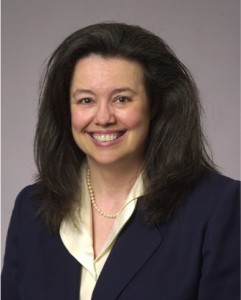 Albrecht recently retired from an illustrious 35+ year career as an Aerospace Engineer working on the Space Shuttle, Missile Launching Systems, Commercial Aircraft, Undersea, SMART Structures and high performance Military Aircraft. Karen spent 9 years at NASA and retired as a Director of Engineering from Lockheed Martin. She has a BSE in Aerospace Engineering ‘72 from the University of Michigan and a Master’s in Mechanical Engineering ’78 from Rice University. She has several additional courses in technology, management and leadership.
Albrecht recently retired from an illustrious 35+ year career as an Aerospace Engineer working on the Space Shuttle, Missile Launching Systems, Commercial Aircraft, Undersea, SMART Structures and high performance Military Aircraft. Karen spent 9 years at NASA and retired as a Director of Engineering from Lockheed Martin. She has a BSE in Aerospace Engineering ‘72 from the University of Michigan and a Master’s in Mechanical Engineering ’78 from Rice University. She has several additional courses in technology, management and leadership.
John Cashman – COE: BSE 1966

Cashman was a Boeing test pilot who piloted the first flight of the 777.
H. Moon Chen – BSE 1932
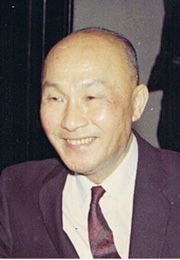
H. Moon Chen (June 19, 1908 – December 7, 2009), better known as Moon Chen, was a second generation Chinese American who was an aviator, airline executive, and aerospace consultant. Chen served as an officer in the 14th Air Force (Flying Tigers) during World War II in the China-Burma-India Theater. He, like many others, was a part of the Greatest Generation who contributed to the war effort but reverted to civilian life after. Moon Chen graduated from the University of Michigan with a B.S.E in Aeronautical Engineering in 1932.
William S. Chen – COE: BSE 1960, MSE 1961

William S. Chen (November 11, 1939 -), better known as Bill Chen, is a third-generation Chinese-American. Chen served as a career U.S. Army officer for over 32 years and retired as a major general in 1993. In 1989 at age 49, he was the first Chinese-American to wear two-star rank of major general in the U.S. Army. Upon promotion to major general, Chen was assigned as the Commanding General, U.S. Army Missile Command, Redstone Arsenal, Alabama, 1989-1992, fulfilling a career-long ambition to command there. Bill Chen graduated from the University of Michigan with a B.S.E. degree in engineering mathematics in 1960 and an M.S.E. degree in aeronautical & astronautical engineering in 1961.
Glidden S. “Glid” Doman – BSE 1942
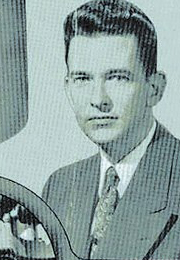
“Glid” Doman was an experienced test engineer and designer of helicopters. He is founder of Doman Helicopters Inc. His helicopters were used exclusively by the U.S. Army and Navy until receiving certification from the United States FAA and the equivalent Canadian authority which allowed for the sale of helicopters for commercial use. Glid also did research with wind turbine where scale model wind turbines were tested in a wind tunnel commonly used for helicopters and airplanes. He soon after lead Italy’s wind energy program permitting him to later be instrumental in developing the “Gamma” wind turbine. This eventually led to the establishment of Gamma Ventures Inc. Of the original six companies in the U.S. helicopter industry he is of the few pioneers to have transferred rotor dynamics technology to wind turbines.
Jennifer L. Duke – COE: BSAE 1992
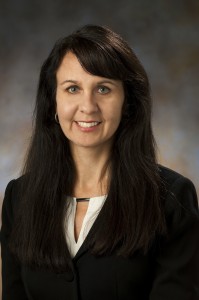 Duke is the director of Aerodynamics at Pratt & Whitney. She was named the Director of Aerodynamics within Pratt & Whitney Engineering in 2013. Ms. Duke has been with Pratt & Whitney since 1992 and has held roles of increasing responsibility in the Performance Systems Analysis, Turbine Aerodynamics, and the Turbine Module Center organizations. She was the performance systems chief for the Operational Commercial Engines group and the Executive Assistant to Pratt & Whitney’s Chief Operating Officer. Since 2013, she sits on the industry advisory board for the University of Michigan Aerospace Engineering Department and the advisory board for the University of Connecticut Department of Mechanical Engineering. She received her B.S. degree in Aerospace Engineering from the University of Michigan in 1992.
Duke is the director of Aerodynamics at Pratt & Whitney. She was named the Director of Aerodynamics within Pratt & Whitney Engineering in 2013. Ms. Duke has been with Pratt & Whitney since 1992 and has held roles of increasing responsibility in the Performance Systems Analysis, Turbine Aerodynamics, and the Turbine Module Center organizations. She was the performance systems chief for the Operational Commercial Engines group and the Executive Assistant to Pratt & Whitney’s Chief Operating Officer. Since 2013, she sits on the industry advisory board for the University of Michigan Aerospace Engineering Department and the advisory board for the University of Connecticut Department of Mechanical Engineering. She received her B.S. degree in Aerospace Engineering from the University of Michigan in 1992.
Theodore Freeman – M.S. 1960
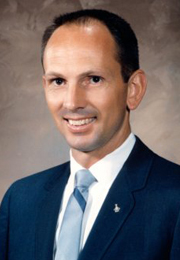
Freeman was a NASA astronaut and a captain in the United States air force. He served primarily in performance flight testing and stability testing areas. He was killed in the crash of a T-38 jet.
Robert A. Fuhrman – BSAE
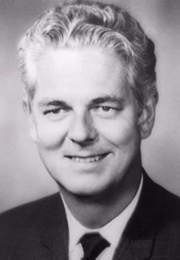
Fuhrman is a pioneering Lockheed engineer who played a central role in the creation of the Polaris and Poseidon missiles. During more than three decades at Lockheed, Fuhrman served as president of three of its companies: Lockheed-Georgia, Lockheed-California and Lockheed Missiles & Space. Fuhrman was elected to the National Academy of Engineering in 1976 “for contributions to the design and development of the Polaris and Poseidon underwater launch ballistic missile systems.” He became president and chief operating officer of the corporation in 1986 and vice chairman in 1988 before retiring in 1990.
Robert Hall – COE: BSE 1927

Robert Hall was an American Air racing pilot and aircraft designer responsible for the Granville Brothers Aircraft Gee Bee Z racer that won the 1931 Thompson Trophy race and Grumman test pilot. He is credited with major role in the design of the Grumman F4F Wildcat, F6F Hellcat and TBM Avenger. He also served as Grumman’s chief engineering and vice president.
Lauri N. Hansen – COE: BSE 1985
 Hansen received Bachelor of Science Degree, Aerospace Engineering, University
Hansen received Bachelor of Science Degree, Aerospace Engineering, University
of Michigan, 1985. Lauri’s NASA career began in 1984 as a co-op at Johnson Space Center (JSC); hired in 1986; began work in Mission Planning/ Analysis Division. Contributions include: leading development of variable altitude strategy for International Space Station (ISS); leading ISS design reference mission development; integrated operation scenarios/development of ISS design analysis cycles. Became Deputy Manager, ISS Vehicle Office 1996; a key leader during early ISS development. She’s held successively responsible positions: Manager, Engineering Project Management; Deputy Director, Engineering. Following 2003 Columbia accident, co-led Crew Survival Working Group; became Deputy Director, Safety & Mission Assurance. Lauri named JSC Chief of Staff, 2011 and is now Director, Engineering at the NASA Johnson Space
Center.
Willis Hawkins – COE: BSE 1937

Hawkins was a Lockheed engineer who contributed to the designs of a number of historic Lockheed aircraft, including the Constellation, P-80 Shooting Star, XF-90, F-94 Starfire, F-104 Starfighter and C-130 Hercules. He started the Lockheed Missiles and Space Company, serving as President. He also served as Assistant Secretary for Research and Development for the US Army.
Karl Henize – Ph.D. 1954

Karl Henize is an astronomer, NASA astronaut, space scientist, and professor at Northwestern University. He was stationed at several observatories around the world, including McCormick observatory, Lamont-Hussey Observatory (South Africa), Mount Wilson observatory, Smithsonian Astrophysical Observatory and Mount Stromlo Observatory (Australia). He was in the astronaut support crew for Apollo 15 and Skylab 2/3/4. As a mission specialist on the Spacelab-2 mission (STS-51-F), he flew on Space Shuttle Challenger in July/August 1985. He was awarded the NASA Exceptional Scientific Achievement Medal in 1974.
Debra Facktor LePore – COE: BSE 1988, MSE 1989 | 2014 Distinguished Alumni Award Winner
 LePore is vice president and general manager of Strategic Operations for Ball Aerospace & Technologies Corp, responsible for increasing Ball Aerospace’s visibility in the market and facilitating collaboration across stakeholders Previously, she was an industry professor at Stevens Institute of Technology in Hoboken, NJ, where she led its Master’s of Engineering in Technical Leadership program and served as Director of Strategic Programs for the Systems Engineering Research Center (SERC). She began her career as an aerospace engineer on strategic defense and advanced launch programs at ANSER in Washington, DC. Lepore is an active leader in the community, including serving as former board chair of Women in Aerospace (WIA), as founding president of the WIA Foundation, and on the FAA’s Commercial Space Transportation Advisory Committee (COMSTAC). Lepore holds a B.S.E. (magna cum laude) and M.S.E. in aerospace engineering, both from the University of Michigan.
LePore is vice president and general manager of Strategic Operations for Ball Aerospace & Technologies Corp, responsible for increasing Ball Aerospace’s visibility in the market and facilitating collaboration across stakeholders Previously, she was an industry professor at Stevens Institute of Technology in Hoboken, NJ, where she led its Master’s of Engineering in Technical Leadership program and served as Director of Strategic Programs for the Systems Engineering Research Center (SERC). She began her career as an aerospace engineer on strategic defense and advanced launch programs at ANSER in Washington, DC. Lepore is an active leader in the community, including serving as former board chair of Women in Aerospace (WIA), as founding president of the WIA Foundation, and on the FAA’s Commercial Space Transportation Advisory Committee (COMSTAC). Lepore holds a B.S.E. (magna cum laude) and M.S.E. in aerospace engineering, both from the University of Michigan.
James B. Irwin – MS 1957, HSCD 1971
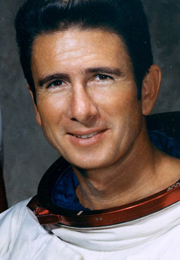
Irwin is an American astronaut. He served as a member of the astronaut support crew for Apollo 10, the first mission to carry the full Apollo stack to the moon and the dry run for the first manned moon landing. He then served as backup lunar module pilot for the second moon landing mission, Apollo 12, before becoming the Lunar Module pilot for Apollo 15, the fourth human lunar landing. He was the eighth person to walk on the Moon.
Clarence “Kelly” Johnson – COE: 1932 BSE, 1933 MSE, 1964 PhD (Hon)

Clarence “Kelly” Johnson was an American system engineer and aeronautical innovator. He was the founder of the Lockheed Skunk Works and the designer of the Lockheed P-38 Lightning, P-80 Shooting Star, JetStar, F-104 Starfighter, U-2 and SR-71 Blackbird. He played a leading role in the design of over forty aircrafts, including several honored with the prestigious Collier Trophy, acquiring a reputation as one of the most talented and prolific aircraft design engineers in the history of aviation. He was also a winner of the National Medal of Science.
Edgar J. Lesher – July 31, 1914 – May 19, 1998
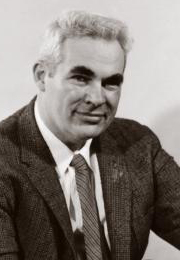
Lesher was a notable aircraft designer and pilot and a professor of aerospace engineering. He designed and constructed the Lesher Teal, an all-aluminum single-piece aircraft. Lesher flew Teal to the 1965 Experimental Aircraft Association (EAA) Fly-In in Rockford, Illinois, where he won an award from the EAA for his achievements.
Jack R. Lousma – 1959, HSCD 1973

Lousma is a former NASA astronaut and politician. He served as a member of the astronaut support crews for the Apollo 9, 10, and 13 missions. Lousma was famously the CAPCOM recipient of the “Houston, we’ve had a problem” message from Apollo 13. He was a member of the second manned crew on the Skylab space station in 1973, and in 1982, he commanded STS-3, the third space shuttle mission. He also served as bakup docking module pilot of the United States flight crew for the Apollo-Soyuz Test Project (ASTP) mission, which was completed successfully in July 1975.
Elizabeth Muriel Gregory “Elsie” MacGill – COE: MSE OC 27 March 1905 – 4 November 1980

MacGill was known as the Queen of the Hurricanes, and was the world’s first female aircraft designer. She became the first woman elected to corporate membership in the Engineering Institute of Canada. MacGill served as Chief Aeronautical Engineering at Canadian Car and Coundry (CC&F), becoming the first woman in the world to hold such a position. Her factory was selected to build the Hawker Hurricane fighter aircraft for the Royal Air Force. MacGill was responsible for designing solutions to allow the aircraft to operate during the winter, introducing de-icing controls and a system for fitting skis for landing on snow.
James A. McDivitt – 1959, HSCD 1965
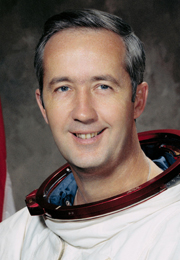
McDivitt is a former NASA astronaut who flew in the Gemini and Apollo programs. He was chosen as Command Pilot of the Gemini 4 flight during which Edward H. White performed the first US space walk, and later the Apollo 9 flight which was the first manned flight test of the Lunar Module and the complete set of Apollo flight hardware. He later became Manager of Lunar Landing Operations and was the Apollo Spacecraft Program Manager from 1969 to 1972.
Daniel J. Scheeres, B.S.E ’87, M.S.E ’88, Ph.D. ’92

Scheeres is the A. Richard Seebass Endowed Chair in the Department of Aerospace Engineering Sciences. He has published extensively in the fields of astrodynamics, dynamical astronomy and celestial mechanics. Past positions include academic posts at The University of Michigan and Iowa State University, and at the California Institute of Technology’s Jet Propulsion Laboratory. He is a Fellow of the American Astronautical Society.
David R. Scott – PhD (Hon.) 1971
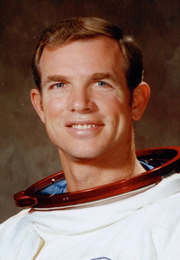 David Scott is an American engineer, retired U.S. Air Force officer, former test pilot, and former NASA astronaut. As an astronaut, Scott made his first flight into space as pilot of the Gemini 8 mission, along with Neil Armstrong, in March 1966. Scott also served as Command Module Pilot aboard Apollo 9, his second spaceflight, along with Commander James McDivitt and Lunar Module Pilot Rusty Schweickart. During this mission, Scott became the last American to fly solo in Earth orbit. Scott made his third and final flight into space as commander of the Apollo 15 mission, the fourth human lunar landing, becoming the seventh person to walk on the Moon and the first person to drive on the Moon.
David Scott is an American engineer, retired U.S. Air Force officer, former test pilot, and former NASA astronaut. As an astronaut, Scott made his first flight into space as pilot of the Gemini 8 mission, along with Neil Armstrong, in March 1966. Scott also served as Command Module Pilot aboard Apollo 9, his second spaceflight, along with Commander James McDivitt and Lunar Module Pilot Rusty Schweickart. During this mission, Scott became the last American to fly solo in Earth orbit. Scott made his third and final flight into space as commander of the Apollo 15 mission, the fourth human lunar landing, becoming the seventh person to walk on the Moon and the first person to drive on the Moon.
Joseph Francis Shea – BS 1946, MS 1950, PhD 1955
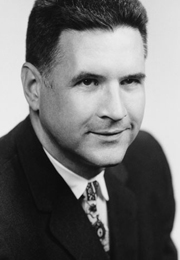
Shea was an American aerospace engineer and NASA manager. He served as Deputy Director of NASA’s Office of Manner Space Flight, and later as manager of the Apollo Spacecraft Program Office during Project Apollo. He played a key role in shaping the course of the Apollo program. Shea later became a senior manager at Raytheon, and then an adjunct professor of aeronautics and astronautics at MIT.
Floyd L. Thompson – BSE 1926
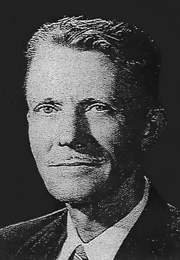
Thompson joined the NASA Langley Research center in 1927, and stayed for nearly five decades. He became the Chief of Research in 1945 and Director in 1960. It was Thompson who formed the Space Task Group at Langley, selected its personnel, and laid the groundwork for the subsequent Gemini and Apollo projects. He was awarded the Daniel Guggenheim medal in 1974. Thompson retired in 1968, and passed away in 1976.
Edward H. White – MS 1959, HSCD 1971

Edward White was an engineer, U.S. Air Force officer, and NASA astronaut. On June 3, 1965, he became the first American to “walk” in space on June 3, 1965. After this, he served as the back-up for Gemini 7 Command pilot Frank Borman, and was also named the astronaut specialist for the flight control systems of the Apollo Command/Service Module. White died along with his fellow astronauts Virgil “Gus” Grissom and Roger B. Chaffee during prelaunch testing for the first manned Apollo mission at Cape Canaveral. He was awarded the NASA Distinguished Service Medal for his flight in Gemini 4 and then awarded the Congressional Space Medal of Honor posthumously.
Alfred Worden – MSE 1963, HSCD 1971

Alfred Worden is an American astronaut who was the command module pilot for the Apollo 15 lunar mission in 1971. He later became President of Maris Worden Aerospace, Inc., and then became staff Vice President of BG Goodrich Aerospace in Brecksville, Ohio. Worden also served as chairman of the Astronaut Scholarship Foundation until 2011, providing scholarships to exceptional science and engineering students.


